Efinaconazole
(2R,3R)-2-(2,4-Difluorophenyl)-3-(4-methylene-1-piperidinyl)-1-(1H-1,2,4-triazol-1-yl)-2-butanol
(2R,3R)-2-(2,4-difluorophenyl)-3-(4-methylenepiperidine-1-yl)-1-(1H-1,2,4-triazole-1-yl)-butane-2-ol
EFINACONAZOLE,
KP-103,
cas 164650-44-6, Efinaconazole [INN], UNII-J82SB7FXWB, AC1LAJ21, Efinaconazole [USAN:INN],
- Efinaconazole
- Jublia
- KP-103
- UNII-J82SB7FXWB
(2R,3R)-2-(2,4-difluorophenyl)-3-(4-methylidenepiperidin-1-yl)-1-(1,2,4-triazol-1-yl)butan-2-ol
Molecular Formula: C18H22F2N4O Molecular Weight: 348.390286
 efinaconazole
efinaconazole
1H NMR PREDICT

………………………………………
13C NMR PREDICT
COSY PREDICT
HMBC PREDICT
...............................
ELABORATION
1H NMR PREDICT
13C NMR
“Drugs at FDA: JUBLIA”. Retrieved 26 June 2014.
| NDA Appl No | RLD | Active Ingredient | Dosage Form; Route | Strength | Proprietary Name | Applicant | |
|---|---|---|---|---|---|---|---|
| N203567 | Yes | EFINACONAZOLE | SOLUTION; TOPICAL | 10% | JUBLIA | DOW PHARM |
Patent Data
| Appl No | Prod No | US Patent No | Patent Expiration |
Drug Substance Claim |
Drug Product Claim |
Patent Use Code |
|
|---|---|---|---|---|---|---|---|
| N203567 | 001 | 7214506 | Oct 5, 2021 | U – 281 | |||
| N203567 | 001 | 8039494 | Jul 8, 2030 | U – 281 | |||
| N203567 | 001 | 8486978 | Oct 24, 2030 | Y |
Exclusivity Data
| Appl No | Prod No | Exclusivity Code | Exclusivity Expiration |
|---|---|---|---|
| N203567 | 001 | NCE | Jun 6, 2019 |
PATENT
Example 1Production of (2R,3R)-2-(2,4-difluorophenyl)-3-(4-methylenepiperidin-1-yl)-1-(1H-1,2,4-triazol-1-yl)butan-2-ol (KP-103)21.26 g (119.4 mmol) of the 4-methylenepiperidine hydrobromide (4-MP.HBr) obtained in Production 1 and 2.859 g (119.4 mmol) of lithium hydroxide were added to 80 mL of acetonitrile and stirred for a while. Thereafter, 20 g (79.6 mmol) of (2R,3S)-2-(2,4-difluorophenyl)-3-methyl-2-[(1H-1,2,4-triazol-1-yl)methyl]oxirane was added and the mixture was heated under reflux in an oil bath (external temperature: 100° C.) for 14 hours. After the reaction completed, ethanol and distilled water were added to the reaction mixture, whereupon a crystal was precipitated. Thereafter, the crystal was filtered off, washed with 40 mL of an ethanol/water mixture, dried with air at room temperature and further dried under reduced pressure at 40° C. for 12 hours to give a pale yellow crystal of KP-103 in an amount of 24.2 g (yield, 87.3%; purity on HPLC, 95.3%).
1H-NMR (500 MHz, CDCl3)δ: 0.96 (3H, dd, J=2.68, 7.08 Hz), 2.13-2.26 (4H, m), 2.35 (2H, br), 2.70 (2H, br), 2.90-2.94 (1H, q, J=7.08 Hz), 4.64 (2H, s), 4.82 (1H, dd, J=0.73, 14.39 Hz), 4.87 (1H, dd, J=0.73, 14.39 Hz), 5.45 (1H, s), 6.72-6.81 (2H, m), 7.51 (1H, dt, J=6.59, 9.03 Hz), 7.78 (1H, s), 8.02 (1H, s).
1H-NMR (500 MHz, CDCl3)δ: 0.96 (3H, dd, J=2.68, 7.08 Hz), 2.13-2.26 (4H, m), 2.35 (2H, br), 2.70 (2H, br), 2.90-2.94 (1H, q, J=7.08 Hz), 4.64 (2H, s), 4.82 (1H, dd, J=0.73, 14.39 Hz), 4.87 (1H, dd, J=0.73, 14.39 Hz), 5.45 (1H, s), 6.72-6.81 (2H, m), 7.51 (1H, dt, J=6.59, 9.03 Hz), 7.78 (1H, s), 8.02 (1H, s).
FAB-MS m/z: 349 [M+H]+
melting point: 86-89° C.
optical rotation: [α]D 25 −87 to −91° (C=1.0, methanol)
………………………………….
Journal of Organic Chemistry, 2014 , vol. 79, 7 pg. 3272 – 3278
A new synthetic route, the shortest reported to date, to access a key intermediate for the synthesis of various triazole antifungal agents was developed. The elusive tetrasubstituted stereogenic center that is essential in advanced triazole antifungal agents was constructed via the catalytic asymmetric cyanosilylation of a ketone. The subsequent transformations were performed in two one-pot operations, enhancing the overall synthetic efficiency toward the intermediate. This streamlined synthetic approach was successfully applied to efficient enantioselective syntheses of efinaconazole (Jublia) and ravuconazole.
Scheme 3. Synthesis of Efinaconazole (Jublia)
(2R,3R)-2-(2,4-Difluorophenyl)-3-(4-methylenepiperidin-1-yl)-1-(1H-1,2,4-triazol-1-yl)butan-2-ol (Efinaconazole)
To a solution of 1 (54.2 mg, 0.216 mmol) in EtOH (217 μL) was added 4-methylenepiperidine (147 mg, 1.51 mmol), ……………………deleted………………. see original…………….. was purified using silica gel column chromatography (CHCl3/MeOH = 10:1) to give 67.6 mg ofefinaconazole (90% yield) as a colorless amorphous solid.
[α]D20 −87.8 (c 1.12, CHCl3);
1H NMR (400 MHz, CDCl3) δ 8.00 (s, 1H), 7.76 (s, 1H), 7.51–7.45 (m, 1H), 6.78–6.68 (m, 2H), 5.50 (brs, 1H), 4.85 (d,J = 14.4 Hz, 1H), 4.78 (d, J = 14.4 Hz, 1H), 4.61 (s, 2H), 2.88 (q, J = 6.9 Hz, 1H), 2.66 (br s, 2H), 2.32 (br s, 2H), 2.21–2.17 (m, 4H), 0.93 (dd, J = 6.9, 2.1 Hz, 3H);
13C NMR (150 MHz, CDCl3) δ 162.5 (dd, J = 250, 13 Hz), 158.5 (dd, J = 246, 12 Hz), 151.3, 145.9, 144.4, 130.6 (dd, J = 8.7, 5.8 Hz), 124.7 (dd, J= 14, 3.6 Hz), 111.4 (dd, J = 20, 2.9 Hz), 108.1, 104.1 (dd, J = 28, 25 Hz), 77.7 (d, J = 5.8 Hz), 64.4, 55.9 (d, J = 8.7 Hz), 52.4, 35.2, 7.63 (d, J = 2.9 Hz);
19F NMR (376 MHz, CDCl3) δ −105.8, −110.7;
IR (CHCl3, cm–1) ν 3423, 3073, 2979, 2939, 2899, 2810, 1615, 1498, 1418, 1273, 1138;
HRMS (ESI-TOF) calcd for C18H23ON4F2 [M + H]+ m/z 349.1834, found 349.1828.
……………
SYN
http://newdrugapprovals.org/2014/06/10/valeant-pharmaceuticals-announces-fda-approval-of-jublia-for-the-treatment-of-onychomycosis/
updated
1H NMR
get clear pic at........http://pubs.acs.org/doi/suppl/10.1021/jo500369y/suppl_file/jo500369y_si_001.pdf
13C NMR
get clear pic at........http://pubs.acs.org/doi/suppl/10.1021/jo500369y/suppl_file/jo500369y_si_001.pdf
Location of Khajuraho Group of Monuments in India.

Hotel Chandela - A Taj Leisure Hotel
|

 amcrasto@gmail.com
amcrasto@gmail.com
 LIONEL MY SON
LIONEL MY SON
He
was only in first standard in school when I was hit by a deadly one in a
million spine stroke called acute transverse mylitis, it made me 90%
paralysed and bound to a wheel chair, Now I keep him as my source of
inspiration and helping millions, thanks to millions of my readers who
keep me going and help me to keep my son happy



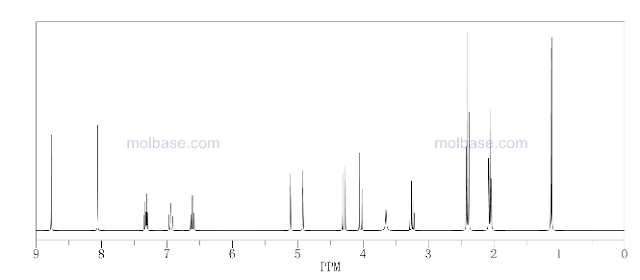














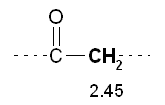 5) The peak 2 at d 2.09 has multiplicity 1 then refers to hydrogens that do not have near no hydrogen (m - 1 0 = H). This confirms the previous inference that the peak is due to a CH 3 near the bunker.
5) The peak 2 at d 2.09 has multiplicity 1 then refers to hydrogens that do not have near no hydrogen (m - 1 0 = H). This confirms the previous inference that the peak is due to a CH 3 near the bunker.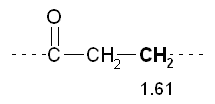 The peak 1 at d 2.45 has multiplicity 3 then refers to hydrogens which have close idogeni 2 (m - 1 = 2 H). This confirms the previous inference that the peak is attributable to a CH 2 near a bunker, and also suggests that there is a further CH 2 tied immediately over.
The peak 1 at d 2.45 has multiplicity 3 then refers to hydrogens which have close idogeni 2 (m - 1 = 2 H). This confirms the previous inference that the peak is attributable to a CH 2 near a bunker, and also suggests that there is a further CH 2 tied immediately over.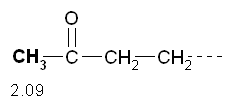 The peak 3 at d 1.61 has multiplicity 6 then refers to hydrogens that are near 5 hydrogens (m - 1 = 5 H). This confirms the previous inference that the peak is due to a CH 2 secondary that has near the two hydrogens of the peak 1 and the other three hydrogen atoms, those of the CH 3terminal.
The peak 3 at d 1.61 has multiplicity 6 then refers to hydrogens that are near 5 hydrogens (m - 1 = 5 H). This confirms the previous inference that the peak is due to a CH 2 secondary that has near the two hydrogens of the peak 1 and the other three hydrogen atoms, those of the CH 3terminal.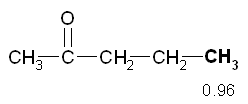 The peak 4 at d 0.96 has multiplicity 3 then refers to hydrogens which have close idogeni 2 (m - 1 = 2 H). This confirms the previous inference that the peak is due to the CH 3 terminal of the molecule.
The peak 4 at d 0.96 has multiplicity 3 then refers to hydrogens which have close idogeni 2 (m - 1 = 2 H). This confirms the previous inference that the peak is due to the CH 3 terminal of the molecule.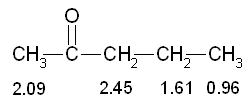 6) The deductions made so far lead us to hypothesize that the NMR spectrum is related to the molecule 2-pentanone which has the structure shown at right:
6) The deductions made so far lead us to hypothesize that the NMR spectrum is related to the molecule 2-pentanone which has the structure shown at right:



